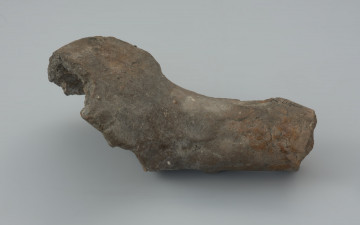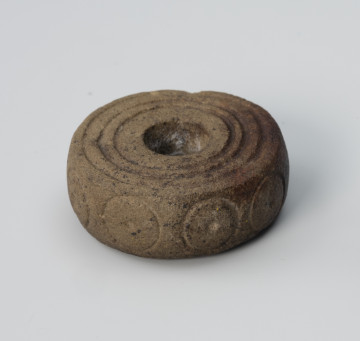
Casting spoon
National Museum in Szczecin
Part of the collection: Middle Ages
The Pomeranian Slavs used carts with wooden wheels for land transport. Not much is still known about the construction of the carts, but during the excavations, sometimes elements of wheels such as wooden hubs, spokes, and even wheels preserved almost intact, are found. It has been concluded from the iconographic sources that four-wheeled carts with spoke wheels were used to transport goods and people, but the use of solid wheels cannot be excluded either. An early medieval cartwheel consists of a casing, a hub and spokes. The casing - the outer part of the wheel (or circumference) - could be bent from one piece of wood or several pieces joined together with pins, the so-called bell. A single casing was more durable but more challenging to make. Rectangular or round spokes adhered to it from the inside, set and wedged with pins in the hub. Their length depended on the diameter of the wheel. In the early Middle Ages, wheels had diameters of approx. 50-90 cm and 6-10 spokes. The example from Kamień has five bells making up the circumference and ten quadrilateral spokes. It represents the type of wheels with the so-called high rim, which is characteristic of Scandinavia. Wheels were made in the early Middle Ages by wheelwrights, who probably also made entire carts. They mainly used ash wood, which was steamed or buried in the ground before use. It made the material soft and flexible. Individual parts were also made of oak, birch and maple wood.
Anna Bogumiła Kowalska
Author / creator
Dimensions
cały obiekt:
Object type
spoke wheel
Technique
wheelwright, hand made, individual
Material
wood
Origin / acquisition method
field research
Creation / finding place
Owner
Muzeum Narodowe w Szczecinie
Identification number
Location / status

National Museum in Szczecin

901 — 1200
National Museum in Szczecin

900 — 1100
National Museum in Szczecin
DISCOVER this TOPIC
National Museum in Szczecin
DISCOVER this PATH
Educational path